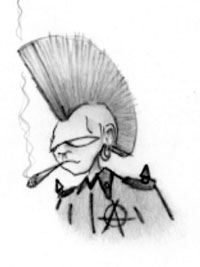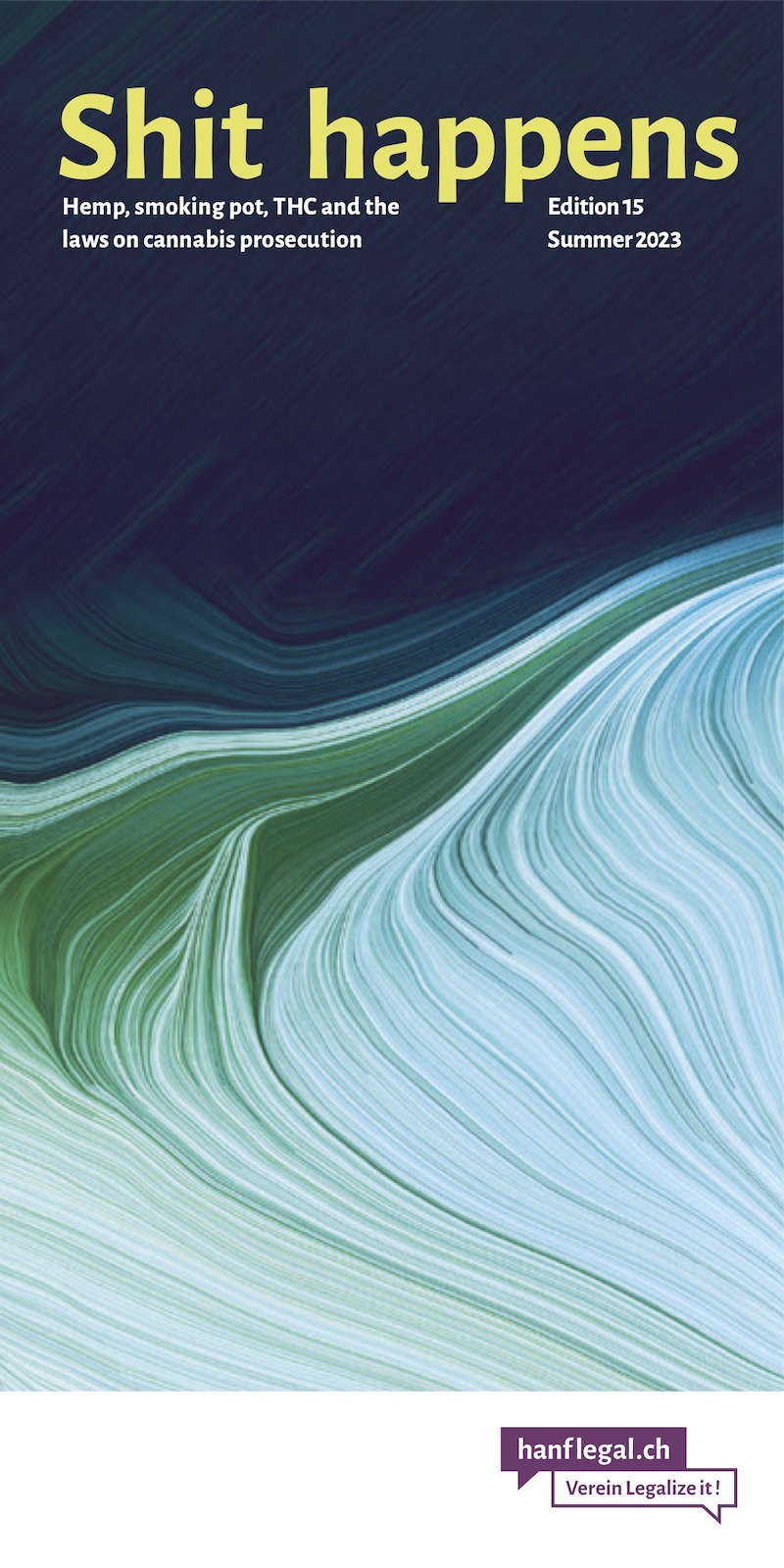- THC & Law:
Table of Contents
If you don't stand out, you have less stress
Communication
No arrangements by phone, SMS, WhatsApp, email or Skype. All electronic means of communication can be monitored very easily, because the edge data and sometimes the content remain stored for six months, even if you delete them. Personal arrangements are more secure.
Police
Police officers are employed to enforce the laws, so also the NarcA with the hemp ban. They are doing their job (even if they only encourage crime). Your job is to find a reasonable way to deal with the prohibition, so that the police don't even notice your actions.
Silence
Silence does not only apply to the police. Those who deal with illegal cannabis should never talk about their own stash, shopping facilities or grow facility, to anyone. Because every info flows on: best friends become best enemies, love relationships break…
Shit happens
Despite all camouflage, despite all caution, THC users are sometimes simply unlucky: a burglary, the police come and find illegal hemp paraphernalia before the tenant is home. So it is good to have dealt with this variant in advance.
Those who do not stand out have less stress

Intensive hemp repression
Every day weed users are controlled by the police and there are always raids at meeting places of THC users. Public space and traffic are being monitored ever more closely. Not only by the officers on the ground, but also by video cameras and drones. This development will continue to intensify and make it more difficult to consume THC in public. What to do or not to do in order to avoid getting caught by the police if possible?
Police surprises
If (plainclothes) police officers surprise you while you are smoking, the only thing left to do is to limit the damage. What is found on your person during an identity check is probably also yours - you can usually no longer meaningfully deny that. But: If you are going to smoke pot outside, then carry less than 10 grams with you and keep quiet about your other consumption behavior. This will probably put you in the category fixed penalty: 100 francs - and that's it.
As little as possible
Especially rolling joints in public is tricky: It is conspicuous and your eyes are fixed on the mixture and the joint for a long time. It is more intelligent to pre-roll the required number of joints at home, if they cannot be smoked in private homes. This way you can smoke the joint quickly and inconspicuously in a quiet place.
If only one joint was taken, it can simply be thrown away when you see the police coming (preferably into the water or a gully, because many officers are not too shy to search a bush for a joint stub).
But the simple fact is, smoking pot in public massively increases the likelihood of coming into contact with the police. If you're not into the “action,” don't do it.
As inconspicuous as possible
Vaporizing produces massively fewer emissions, hardly disturbs others and is therefore much less conspicuous. Above all, vaporizing can be stopped immediately in an emergency, but spotting a burning joint produces even more emissions.
Problems and solutions at home
People who use exclusively at home have fewer problems than those who smoke pot outside. But the smoke and the smell can also cause problems in private homes. The neighbors smell it - fat weed joints can be noticed up to 50 meters away, depending on the wind force. Again, there are ways to camouflage. Sometimes just a few incense sticks help to fog the cannabis smell. THC can also be eaten: A yogurt with some hash - nobody smells anything. A Guetzli with cannabis butter also makes no odor problems. However, the dosage must be right!
Vaporize instead of smoking
Furthermore, there are very good vaporization devices that dissolve the THC by means of hot air so that it can be inhaled. Since no smoke is produced here, the emissions are extremely small. The smell dissipates after only a few centimeters. Such devices (vaporizers, vaporizers) can also serve well in windowless rooms (e.g., in practice venues).
It is forbidden, camouflage is necessary
As long as the ban exists, the slogan can only be: Camouflage is half the battle. And not to forget: Clothes make the man! Who goes with hemp leaves on the T-shirt or with penetrating weed smell (be it clothes, be it uncleanly packed flowers) on the street, attracts the risk virtually. Glass containers are more dense than minigrips (of which, if anything, better to use two on top of each other). Both can be additionally covered with a paper bag, so that the flowers are not immediately visible at the first glance in the backpack.
If you need to transport weed or hash, it is best to do so in portions of less than 10 grams (penalty-free minor amount). In general, the following applies when transporting: directly from A to B, no detours, do not smoke pot, do not get any Papierli from the Selecta machine, be as sober as possible and rather during the day than at night.
Small but nice
When growing hemp on the balcony, it is recommended not to grow two-meter bushes, but rather the small “autoflowering” plants that grow up to 35 centimeters. Since these are already ready for harvest after three months, even outside two harvests per year can be achieved (which somewhat compensates for the small yield per plantlet).
If you want to grow indoors, you have to work cleanly (electricity, heat, ventilation, filters). Most plants blow up because of sloppy work.
Ordering hemp seeds abroad is still not a good idea: customs will report you!
Car camouflage
If you drive, you should never carry any smoking paraphernalia with you, including paper. The ashtray should be empty and the car generally clean. During a traffic control, the police are happy to investigate any evidence of drug use, because driving under the influence of drugs is a misdemeanor.
Without problems
Many THC users consume cannabis for decades without getting into trouble with the police. Of course, a bit of luck is also involved, but you can influence a lot with your own behavior. How THC users behave, where they enjoy, how they transport, store, grow, with whom they share which secrets: It helps to think, plan and be careful.
Who are the police specifically targeting?
Different tracking intensity
Not all THC users have the same probability of being reported. Particularly at risk are smokers with the following characteristics: male, around twenty years old, long-haired, freaky, often found in the alley. Punks are also increasingly controlled and hip-hoppers have also “risen” to become a preferred group. Those who are often out at night and frequent relevant clubs also have a higher probability of being inspected and reported.
Women are less often reported
Less than ten percent of criminal offenses for cannabis consumption are committed by women - at least that's how the police register it. However, the real ratio between male and female potheads is about three to one. However, women consume less frequently in public. And that is the main reason for a report.
The young bear the brunt of repression
Those under 30 make up 80% of those accused of transgressions. Those under 18 make up only about 20% of those accused. Just under half of the referrals involve young adults between the ages of 18 and 24. Those over 30 also account for only about 20 percent of those charged. But here, too: The older ones smoke pot more at home and have stopped using in public. Often because the fines they have received have made them more cautious!
Generally and exaggeratedly formulated: A 20-year-old, long-haired, freaky-looking man who is frequently out in public is much more likely to be stopped and reported by the police than a 40-year-old, inconspicuously dressed woman who leads more of a domestic life. Even though she may smoke pot a lot more than he does!
Offenses by substance and age
The ratio of hash to weed violations increases with age - that is, the older someone is, the more likely he or she is to be caught with hash, while the young are almost always caught with weed:
| Age | Share | Hash | : | weed |
|---|---|---|---|---|
| Under 20 years old | 34% | 1 | : | 21 |
| 20-30 years old | 45% | 1 | : | 11 |
| 30-40 years old | 14% | 1 | : | 5 |
| over 40 years old | 7% | 1 | : | 3 |
| Total | 100% | 1 | : | 10 |
weed has definitely replaced hash
Even about ten years after the hemp store boom, weed seems to have retained its supremacy in the cannabis market. It could also have been that after the end of the store era, hashish consumption would increase again or more users would be reported for hashish. This is not the case: There are ten times more reports for weed (and plants) than for hashish (and oil).
It is rather the older users (over 30) who probably still have their old connections. They probably also consume more weed than in the 80s, however they do not seem to want to give up hashish completely. This may be due to habit and tradition, but could mean that even the finest weed is not the same as good hash - apples and pears cannot be compared 1:1 either.
Source: Swiss Federal Statistical Office, Police Crime Statistics (PKS) 2010, Narcotics Act (NarcA): Offenses by substance and persons accused.
 |  |  |  |
Evaluation: referrals in 2013 by gender and age
Persons reported for contravention by gender, 2013
| Gender | Men | Women | Total |
|---|---|---|---|
| Quantity | 38'416 | 4'246 | 42'662 |
| Percent | 90 % | 10 % | 100 % |
90% of the consumption convictions concern men. Even though there are probably more men than women who smoke pot, the ratio is hardly 1 : 9. We would rather estimate it at 1 : 2. This means that women are much less likely to be reported to the police than men.
Persons reported for misdemeanor by gender, 2013
| Gender | Men | Women | Total |
|---|---|---|---|
| Quantity | 7'852 | 709 | 8'561 |
| Percent | 92 % | 8 % | 100 % |
Males also dominate those reported for misdemeanor (transfer, trafficking) at 92%, even slightly more than for violation reports above.
Persons arrested for contravention by age, 2013
| Age | under 20 | 20 to 29 | 30 to 39 | 40 to 49 | 50 to 59 | 60 +, unknown. | Total |
|---|---|---|---|---|---|---|---|
| Quantity | 14'199 | 18'696 | 6'493 | 2'426 | 762 | 93 | 42'669 |
| Percent | 33 % | 44 % | 15 % | 6 % | 2 % | 0 % | 100 % |
The main burden of repression is clearly borne by the young. The under-30s receive 77% of the reprimands. Even though more people smoke pot in their younger years than in their old age, there are now also many retired people who smoke pot. But they are less likely to be out smoking joints and less likely to get caught in the mills of justice. But: It can also happen to the well-situated elderly! The small discrepancy between the two totals in the infraction tables is due to some unclear cases.
Persons arrested for misdemeanor by age, 2013
| Age | under 20 | 20 to 29 | 30 to 39 | 40 to 49 | 50 to 59 | 60 +, unknown. | Total |
|---|---|---|---|---|---|---|---|
| Quantity | 2'230 | 3'645 | 1'649 | 705 | 279 | 53 | 8'561 |
| Percent | 26 % | 43 % | 19 % | 8 % | 3 % | 1 % | 100 % |
It is interesting to note that the age distribution of convictions for misdemeanor is very similar to that of contraventions. Of course, the numbers are less high, but the percentage distribution is quite similar: The main burden of repression is again borne by the under-30s, who account for 69% of all reprimands.
Individuals arrested for contravention by weed/hash and age, 2013
| Age | under 20 | 20 to 29 | 30 to 39 | 40 to 49 | 50 to 59 | 60 +, unknown. | Total |
|---|---|---|---|---|---|---|---|
| due to weed | 13'563 | 17'199 | 5'723 | 2'026 | 627 | 75 | 39'213 |
| Because of hash | 636 | 1'497 | 770 | 400 | 135 | 18 | 3'456 |
| Hash to weed | 1 : 21 | 1 : 11 | 1 : 7 | 1 : 5 | 1 : 5 | 1 : 4 | 1 : 11 |
Most of the referrals are made because of weed: 92% on average. This is true for all age groups. But for those under 20, weed accounts for almost 96%, and for those over 60, “only” 81%.
Support our work with a donation:
Bank transfer
Account number (IBAN):
CH02 0900 0000 8709 1354 3
Full account details
Or scan this QR code with your eBanking App (ZKB, Revolut, Postfinance, …):

Or open/share the QR code as PDF file with your eBanking App.
Credit card
Donate via credit card
Verein Legalize it!
Quellenstrasse 25
8005 Zürich
Threema ID 7NH65RBY
Don’t miss anything! Follow us on social media:
